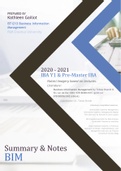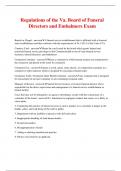Samenvatting
Business Information Management (BT1213) Summary FULL slides/notes content compilation
Contains everything from the Business Information Management course. No information is left out, and I've added the occasional extra info or link to understand certain material. The main content is taken from the PDFs of the courses, but made available in a singular file with all it's searchable co...
[Meer zien]





